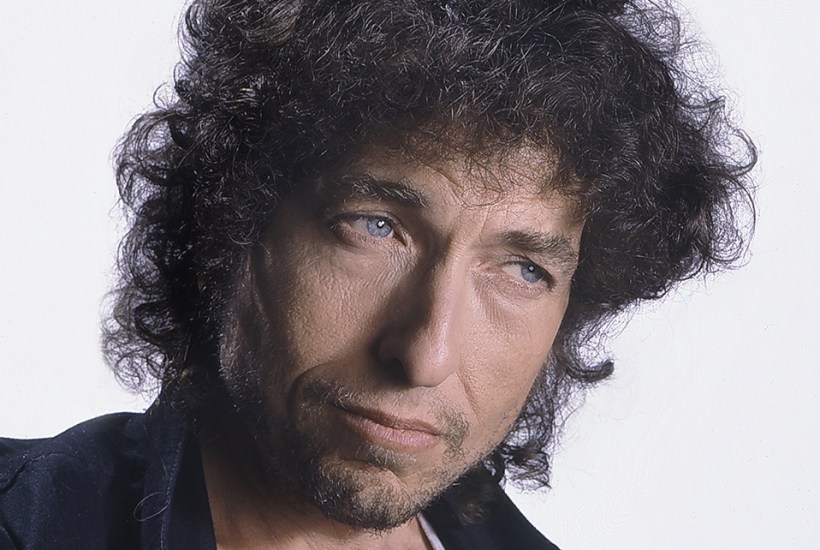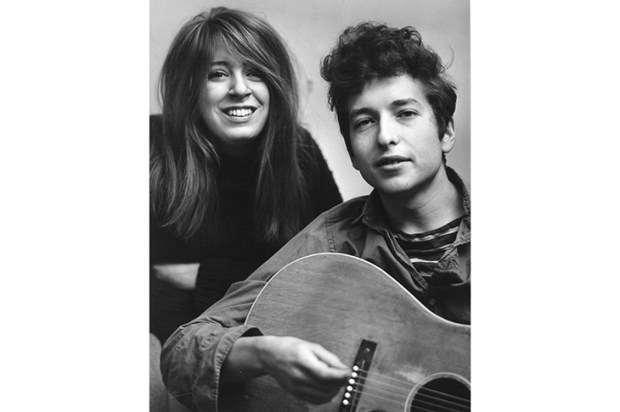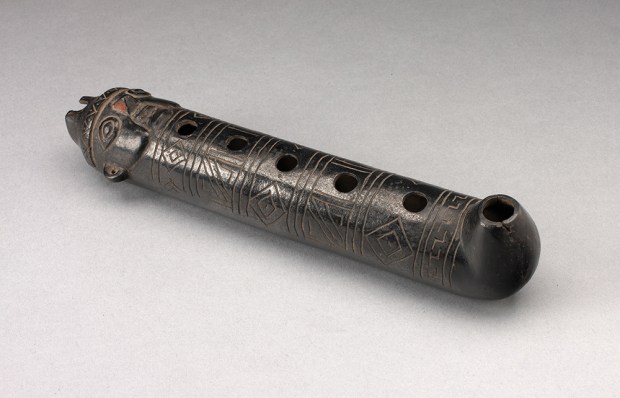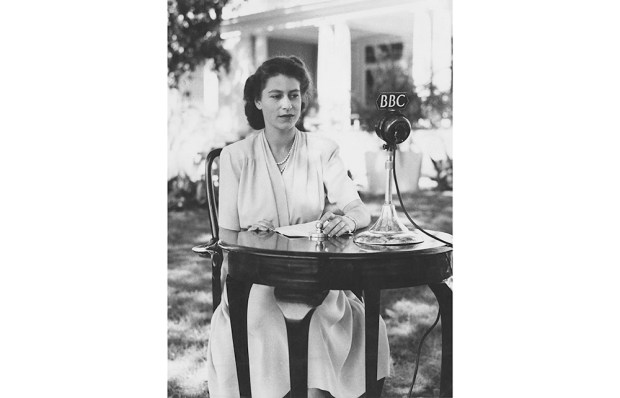In Folk Music, Greil Marcus has captured an entire world of the creative and cultural development of the artist known as Bob Dylan in a single book. He not only tells a Dylan biography in seven songs but creates an autobiography of his own long career as a writer on music and America, as well as a rich history of American folk songs and the new life they engendered as Dylan sat down to write his own. How does he do it, I’ve often wondered when I’ve read him in the past. This time, I’ve no answers at all – only admiration and respect.
Other biographies of Dylan (a growing number) often tell you more about their authors than their subject. Writers such as Howard Sounes and Bob Spitz have focused on revealing details of Dylan’s eventful personal life which, honestly, are far less interesting than his work. Sean Wilentz’s Bob Dylan in America, which zooms in on key moments in Dylan’s creative process, and Richard Thomas’s Why Bob Dylan Matters, with its close readings of the songs, are both invaluable books for Dylan students and admirers. But Marcus ranges more widely, and his in-depth analysis of the songs themselves is unmatched.
His cultural knowledge of American history and music spans the 77 years of his life and many centuries before too, from sea shanties sung by English sailors as they made for the mysterious lands to the west, to Highland ballads given new life and instrumentation on the stone and plank porches of cabins in the Appalachian mountains. Marcus’s understanding of the music from which Dylan’s own songs spring is vast, and he brings it to his readings and celebrations of Dylan’s songs without patronising or pretence.
His passionate intensity could be off-putting – as some critics have long complained. I tend to revel in it, and never more so than in this book, which is a perfect storm of things to love: American history, music history, Dylan’s music and beautiful writing. The style is colloquial but not informal; informative but not didactic, and downright seductive to follow. It would be easy to be repetitive in writing about Dylan’s songs, but Marcus isn’t. He sees connections, certainly, but also things that set individual songs, and times in Dylan’s life, apart, and lifts them into sharp and well- reasoned relief. The jacket cover and thoughtful interior drawings by Max Clarke complement and illustrate Marcus’s, and Dylan’s, words with bite and flair.
The seven songs are, in the order they’re arranged: ‘Blowin’ in the Wind’ (1962); ‘The Lonesome Death of Hattie Carroll’ (1964); ‘Ain’t Talkin’ ’(2006); ‘The Times They Are a-Changin’ ’ (1964); ‘Desolation Row’ (1965); ‘Jim Jones’ (1992); and ‘Murder Most Foul’ (2020). Prefacing them is a two-page biography of Dylan, just to show that it can indeed be done, and a companion piece entitled ‘In Other Lives’:
‘I can see myself in others,’ Dylan said in Rome in 2001, speaking to a crowd of journalists. If there is a key to his work from now back to its beginning, that may be it.
The conditionals ‘if’ and ‘may’ so beloved of high modernist writers are doing a lot of work here – but it’s all good. Dylan not only lends himself to the conditional; it defines him. He lives the lives not only of the songs he’s written but those he’s learned from others and performed for nearly 70 years. This spirit shapes Marcus’s ‘attempt at a biography made up of songs and public gestures’ in ‘a frame of reference, a source of life for certain songs… But never a key to their meaning’. Keys lock you in. Marcus cannot do that to Dylan. It’s good that his book does not follow a chronological order, because Dylan doesn’t. Marcus gets that, and relishes it.
A longtime New Yorker, he is particularly attuned to Dylan in Greenwich Village and to the other musicians Dylan met and learned from there. For instance, the dark life of Karen Dalton and the great gifts she had is well and sensitively told. Interviews with Happy Traum, a crucial figure on the Village folk scene and still living, recording and performing in Woodstock, add a great deal. How Dylan translates the old prisoner’s lament ‘Jim Jones’ in performance is a spectacular chapter. It’s appropriate to include a song (or even more) that Dylan didn’t write himself, because the use of songs he loves and the stories they tell is at the heart of this book, as they are at the heart of Dylan’s art.
‘Blowin’ in the Wind’ is one of his best known and loved songs. Together with a small group of musicians and T Bone Burnett, Dylan recently turned it into a one-of-a-kind recording that sold at Sotheby’s for nearly $2 million. Written in 1962, when Dylan was 21, the song could be said to be from his juvenilia – except he didn’t have juvenilia: he emerged fully formed from the artistic womb. It has its roots in the American civil war anthem ‘No More Auction Block’, and particularly in Odetta’s 1960 recording of it from her performance at Carnegie Hall.
The civil war underlies much of the book, and that’s as it should be. We acknowledge how important it still is in America; yet no one has previously fully recognised and explored how important it is to Dylan and his music and films.
Also in the ‘Blowin’ in the Wind’ chapter are Malcolm X and Robert Johnson; Woody Guthrie and the Greenwich Village folk scene; the songs Dylan was soaking up from other performers at coffee houses and clubs; and the clear, strong voice of the artist and writer Susan Rotolo, Dylan’s partner at the time – the young woman walking down Jones Street with him on the cover of The Freewheelin’ Bob Dylan (1963), the record that opens with ‘Blowin’ in the Wind’. Marcus’s exploration of the song is essential in setting the scene for the rest of the biography: a Brunswick stew of things you’ve heard before, new stories, tales of times gone by and connections to later and today, all assembled in a masterful way. ‘There are no straight lines in the language songs speak’ is a sentence I will always wish I had written.
Much of the power of Marcus’s story-telling is in the histories that underlie each of the songs he discusses. He can talk about ‘Old Dan Tucker’ on one page and Machiavelli and Ovid on the next, and be consistently right about the influences on Dylan. Quotations from rare interviews or from Dylan’s faux-autobiography Chronicles: Volume One (2004), in which he speaks about the composition of a song, lace together scenes that are set afresh before us. The chapter on ‘The Lonesome Death of Hattie Carroll,’ one of Dylan’s most powerful songs, reminds us what America was like in 1963, when the wealthy young William Devereux Zantinger hit the 51-year-old black barmaid Carroll with a toy cane at a Baltimore hotel society gathering, causing her death – for which Zantinger received a six-month sentence.
And then Marcus recalls recent times, when ‘Ivanka Trump and Jared Kushner glided through the White House as if it might well have been the Palace of Versailles… and the rich were paid to be free, to represent freedom to everyone else’. Laurie Anderson’s ‘O Superman’, in which ‘the object of deconstruction was the United States itself’, and her performance of the song just eight days after 9/11, with its chilling ‘Here come the planes’, is a song with a kindred spirit.
Marcus is excellent on the strange, thrilling way songs ‘come loose from their authors’ and ‘mark history, or even make it, but become part of its fabric, or part of the flag’. His discussion of ‘The Times They Are a-Changin’ ’, in the context of the riot at the Capitol on 6 January last year, is as swift and brief and hard as a slap in the face. Such connections make you not just think, but realise your heart is beating faster, you’re scared and you should breathe quietly for a few moments before you read on.
The chapter on ‘Murder Most Foul’ is the best thing so far written on this astounding new ballad, the only song from Dylan’s most recent album Rough and Rowdy Ways (2020) that he hasn’t yet performed live. Here’s how Marcus puts our communal experience of listening to it:
This was all a testament to the first fact of the song: the strange way that it can hardly be heard once without sparking anyone’s need to hear it again – a world gathering around a campfire of unanswerable questions, and it takes everyone around the campfire to hear the whole song.
Like Dylan, Marcus carries with him the influences and people, texts and songs on which he ever builds.
The last line of Folk Music made me gasp out loud – the first time a book has done that since I read The Grapes of Wrath, aged 12. But don’t skip ahead to it. Take your time, savour the book and listen to each song before you start reading its chapter. And listen to the other ones you find there too. After all, you must know your song well before you can start singing.
The post The music that inspired Bob Dylan appeared first on The Spectator.
Got something to add? Join the discussion and comment below.
Get 10 issues for just $10
Subscribe to The Spectator Australia today for the next 10 magazine issues, plus full online access, for just $10.
You might disagree with half of it, but you’ll enjoy reading all of it. Try your first month for free, then just $2 a week for the remainder of your first year.














Comments
Don't miss out
Join the conversation with other Spectator Australia readers. Subscribe to leave a comment.
SUBSCRIBEAlready a subscriber? Log in